
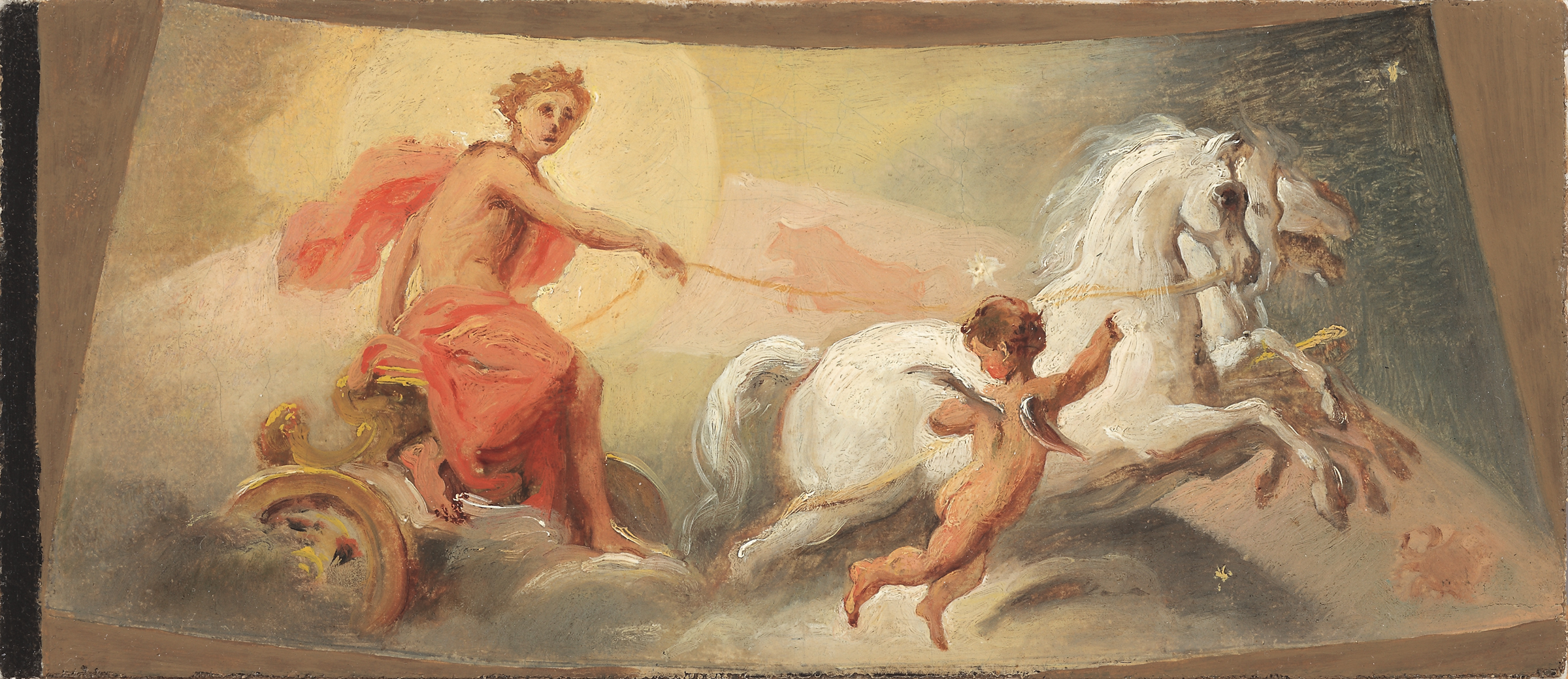
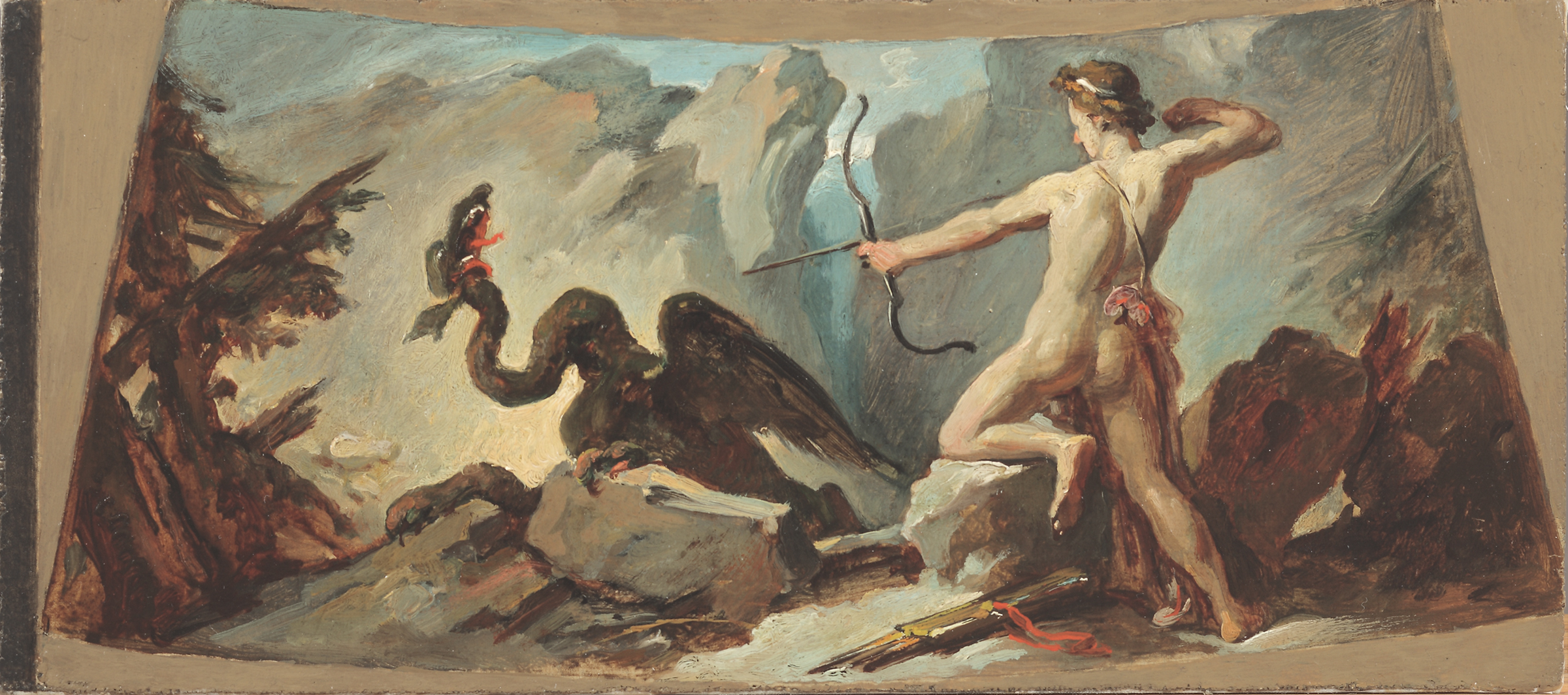
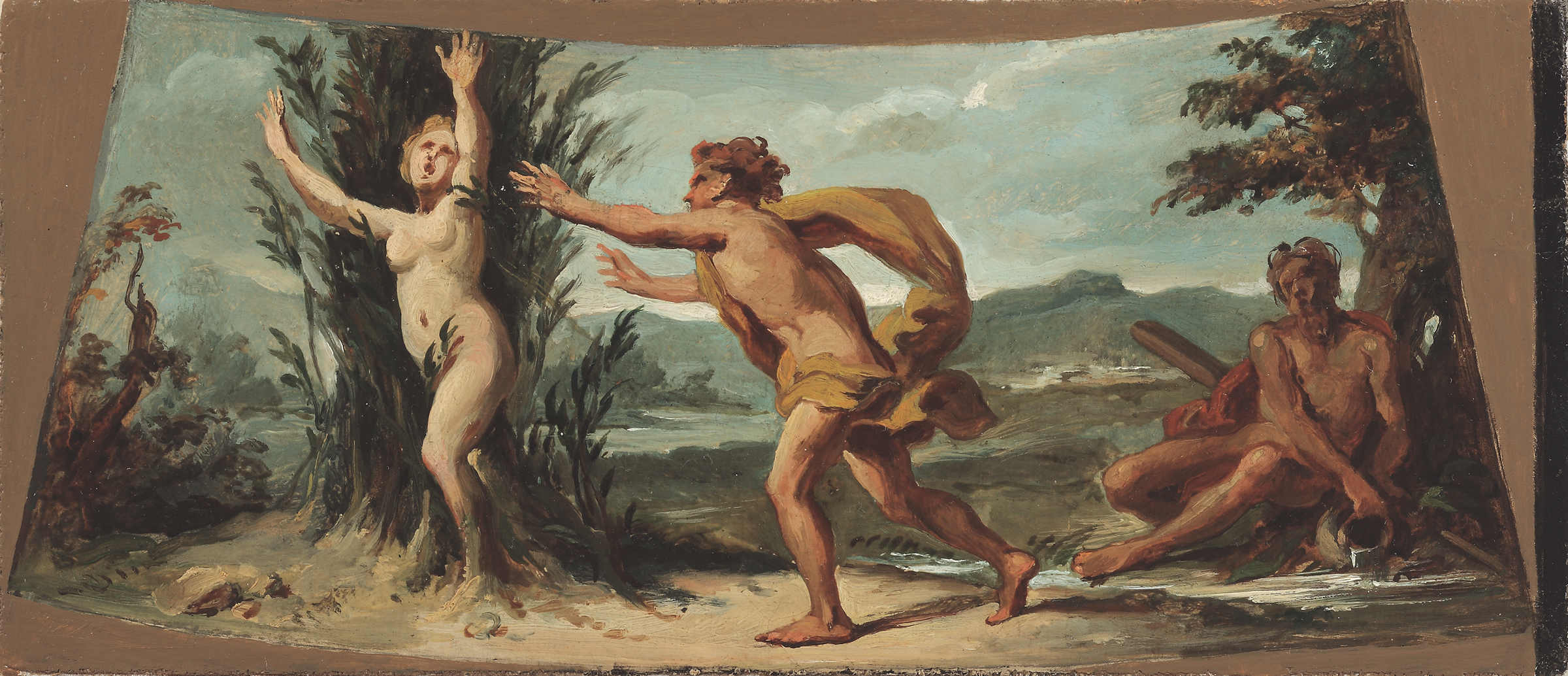
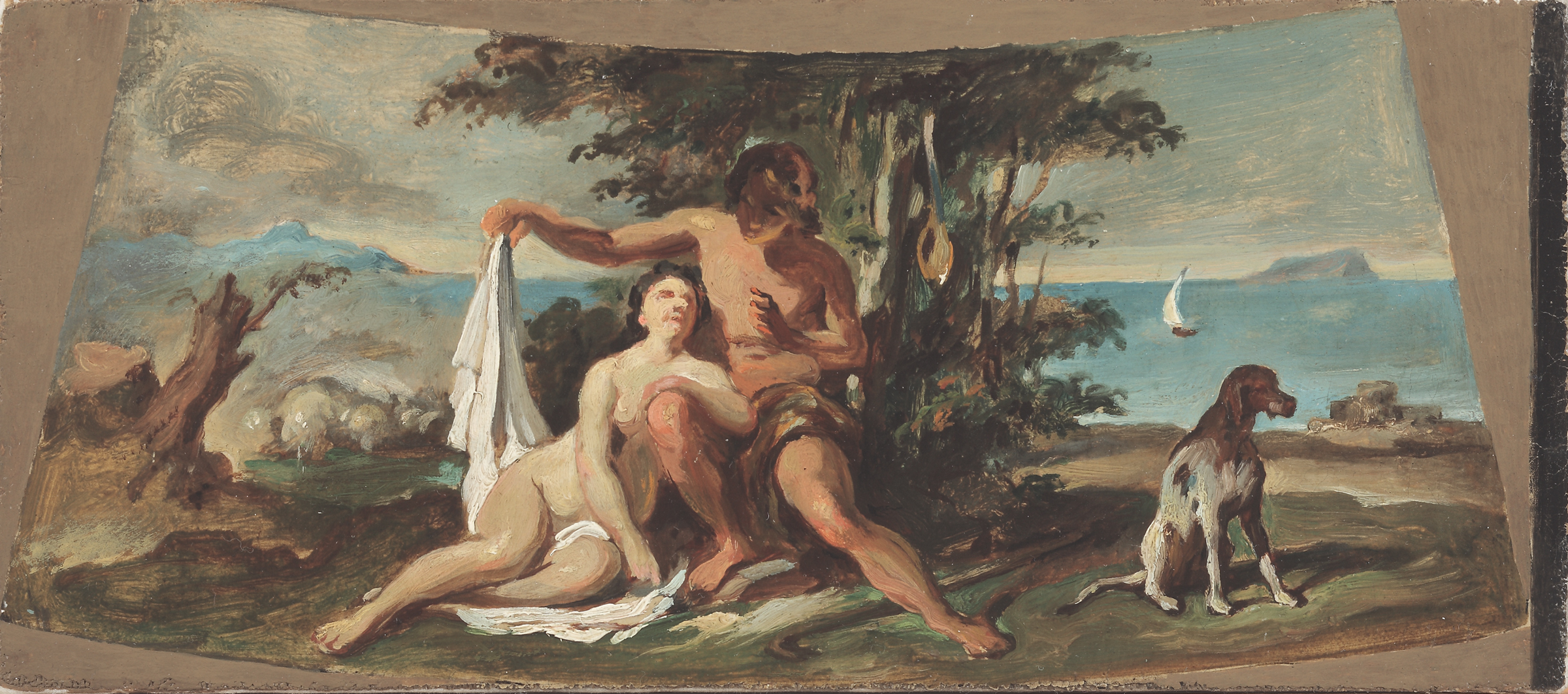
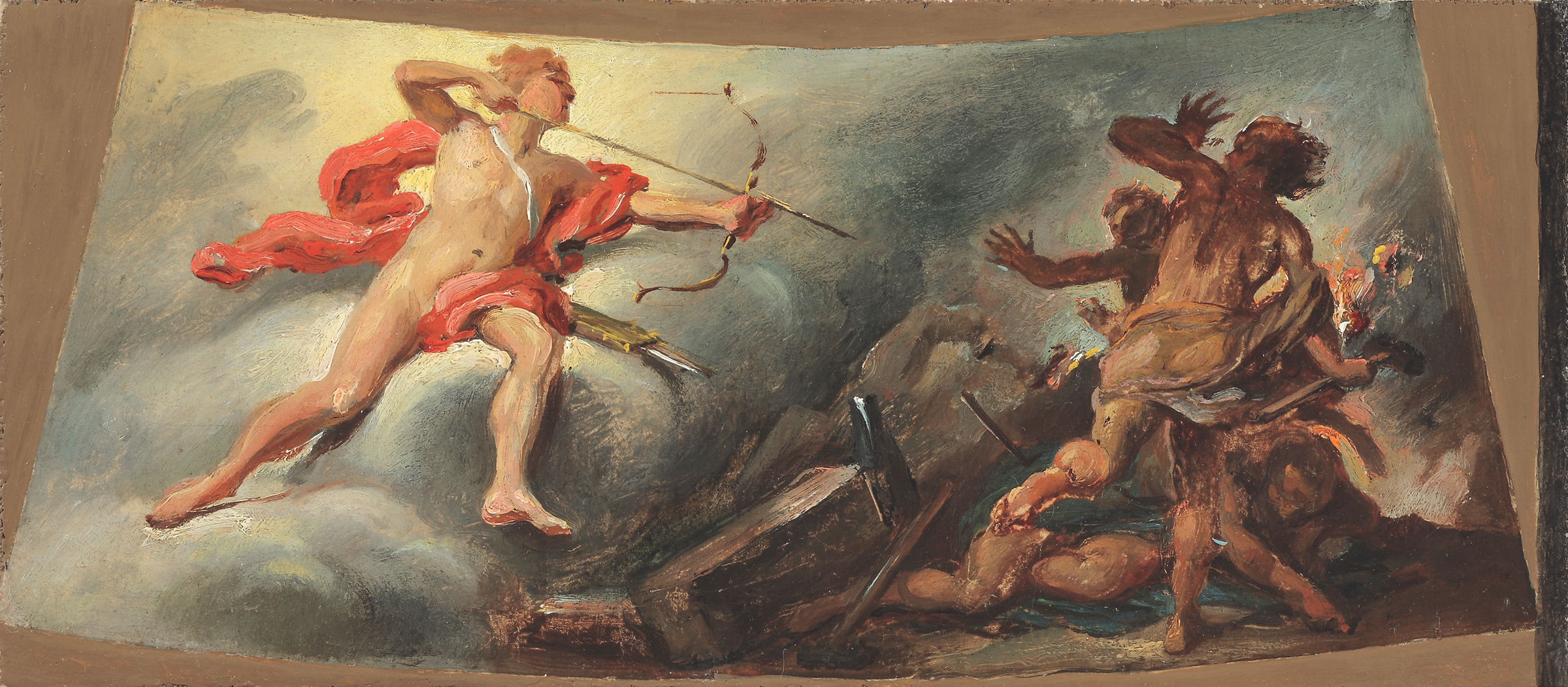

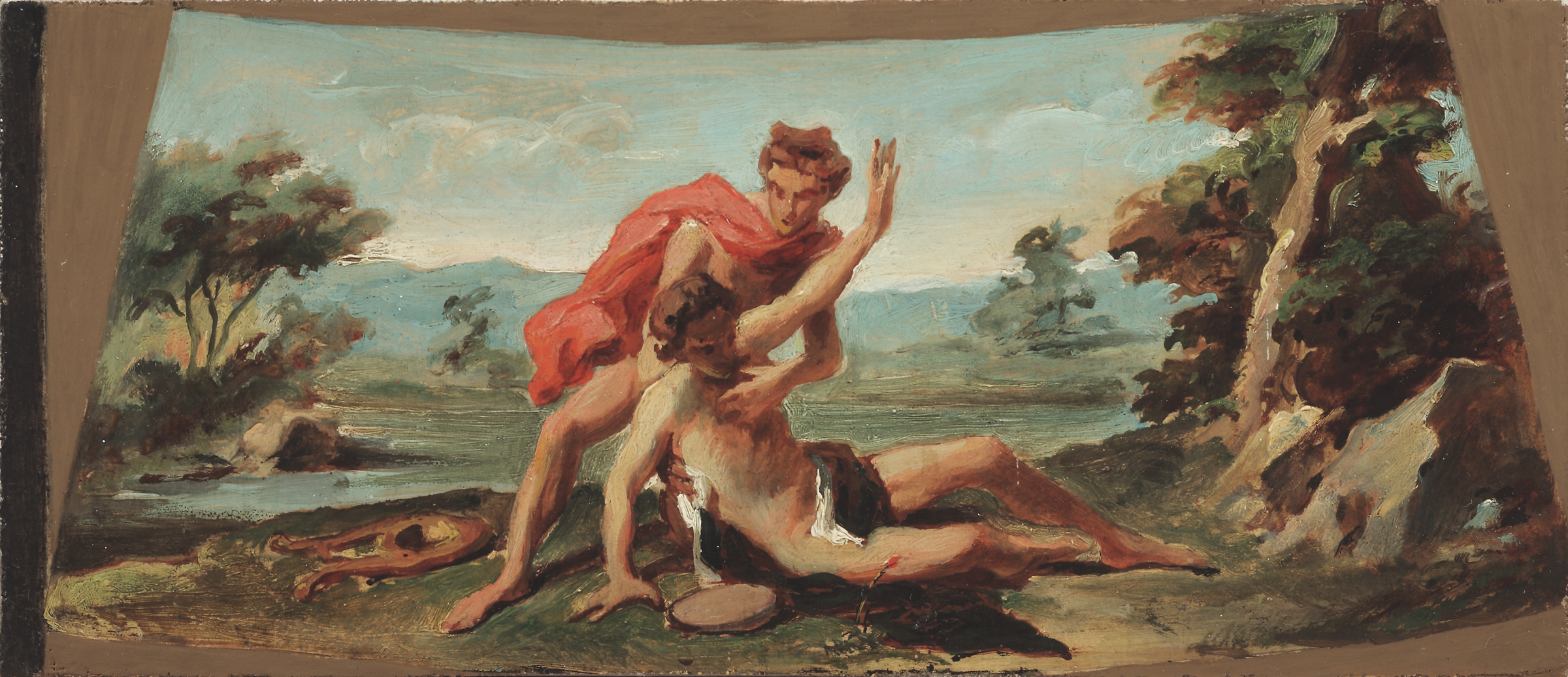
Circle of JACOPO GUARANA
(Verona 1720 – 1808 Venice)
The Deeds of Apollo
Set of Seven Paintings
Oil on canvas
Each: 4 ¾ x 11 1/8 inches
Provenance:
Suida-Manning Collection
These seven scenes are brilliant evocations of episodes from the legend of Apollo as related by Ovid in his Metamorphoses. While they had been previously thought to have been painted as decorations for an elaborate cabinet or stipo, the recent cleaning of the canvases revealed their original format to be slightly trapezoidal on the sides and curved at the bottom. This would suggest that they were conceived as bozzetti for the inside decoration of a dome, most likely along the lower circumference. Considering the subject matter portraying the God of Poetry and Music, it seems likely that these designs were intended for the decoration of a theater.
The scenes represented, with their associated passages from Metamorphoses, are as follows and represented in the same order above:
1. Apollo as God of the Sun (Bk I: 313-347)
2. Apollo Slaying the Earth-Dragon Python (Bk I: 438-472)
3. Apollo Chasing Daphne as She Turns to a Laurel Tree (Bk I: 438-472)
4. Apollo, Disguised as Shepherd, with the Shepherdess Isse (Bk VI: 103-128)
5. Apollo Killing the Sons of Niobe (Bk VI: 204-266)
6. Apollo and the Flaying of Marsyas (Bk VI: 382-400)
7. Apollo and the Death of Hyacinth (Bk X: 143-219)
No completed project, whether in fresco or on canvases, has yet been associated with the present oil sketches. They have been traditionally considered to be eighteenth-century Venetian, by an artist in the circle of Giambattista Tiepolo; their attribution to Jacopo Guarana has recently been proposed by to Mino Devanna. Guarana was both an assistant and an associate of Tiepolo, although his early education is said to have been with Sebastiano Ricci. Frescoes by him are to be found both in churches and palaces in Venice, including Ca’Rezzonico and Palazzo Balbi, as well as across the mainland, including the Villa Pisani at Stra, The Villa Contarini-Rota in Valnogaredo, and the Villa Contarini in Cinto Eugeneo.
